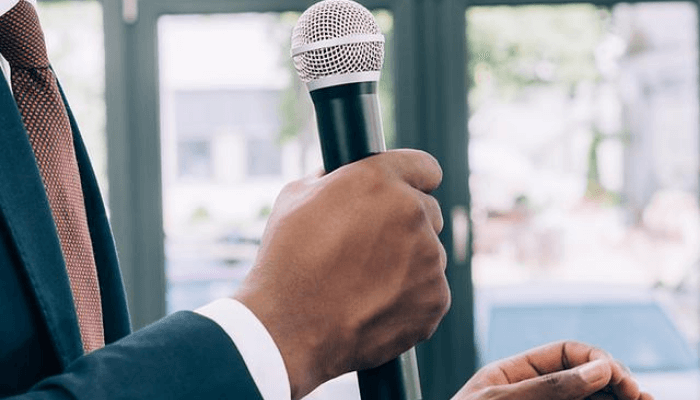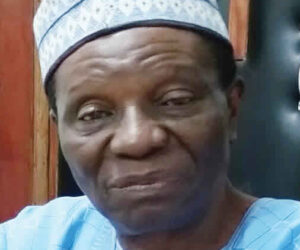Introduction
Being able to speak coherently in public without prior notice is not just a random talk; it’s rather a skill that is advanced and refined, portraying a high level of intellectual capacity. Having spent more than a decade in the broadcast industry, I have come to realise that communication is not just about words; it is much more than that. Being part of this field, you don’t always have the privilege of writing down everything you will say or even getting the opportunity to practise speaking. Live interviews, breaking stories, impromptu in-studio calls – all of these require one essential skill: the ability to communicate clearly, confidently, and without any prior preparation.
The significance of spontaneous public speaking
Spontaneous speaking, as opposed to topic-related speeches or previously rehearsed presentations, is an occurrence that showcases the essence of a person’s communicative excellence. It removes the layer of rehearsed words and PowerPoint slides, leaving us with nothing but the communicator’s thoughtfulness, confidence, and ability to connect.
Fundamentals for ace communicators
1. Confidence through clarity:
Confidence isn’t about having all the answers; it’s about being rooted in your message.
Early in my career, I thought confidence meant knowing everything. But over time, I learnt that it’s not about quantity; it’s about clarity. Stick to one idea. Own it. Make it real. That’s what sticks with your audience.
The best spontaneous speakers prioritise clarity over cramming in too much information. They communicate with purpose, focusing on delivering one impactful idea instead of several rushed thoughts.
Clarity also involves understanding your unique voice—your tone, rhythm, and style. When you express yourself with personal clarity, your confidence naturally becomes infectious.
2. Listening is the game-changer
Spontaneous speaking isn’t just about sharing your thoughts; it starts with listening. By tuning into your surroundings, the tone of the conversation, and the underlying intent of a question, you can craft a more effective response.
In radio and TV, listening is a survival skill. You listen to your guest, your producer, and your audience, all at once. The best spontaneous responses I’ve given weren’t the smartest; they were the most relevant. Because I was listening first, and this is the easiest way to become a top-notch communicator.
3. Power of the pause
As a professional in broadcasting, pausing saved me so many times on live air. When thoughts don’t seem well-aligned or clear, pause; this gives room to realign your thoughts. Surprisingly, this always works, because as I pause, they pause too. Sometimes, you even have to emphasise that you paused to be sure the message you’re passing across is felt and understood. A well-placed pause doesn’t weaken your speech. It strengthens your presence.
4. Aim for connection, not perfection
Once during a live interview, I fumbled. At that moment, reflex made me laugh, and that kept the conversation going. The guest smiled; the audience connected. In those impromptu moments, focus on making a connection rather than trying to impress. Your authenticity, relatability, and emotional intelligence are what truly engage listeners—not perfect grammar or memorised lines. Speak with empathy and intention. Instead of striving for perfection, aim to be genuine.
A few practical processes:
Practise short responses daily
Pick random topics and discuss them for 60–90 seconds without any preparation. This helps train your brain to quickly organise your thoughts and get used to thinking out loud. You can only improve with spontaneous speeches if practice is consistent.
Ask questions
When speaking to a group or live audience, be sure to ask questions. These questions are not just to allow you to realign your thought process or know whether your audience has been listening, but to actually have the audience engaged. An out-of-the-blue question can rattle everyone’s attention back to the main subject, and your presentation kicks back to life.
Scan the room
Knowing and understanding your audience is a key factor that cannot be overlooked in broadcasting. Knowing how to tailor messages to fit the understanding of your audience is the gateway to achieving effective communication. Once, I was invited to speak on a youth empowerment programme, only to discover that the audience was mostly grassroots politicians. Spontaneity sprang here; to communicate at the level of the politicians, I discarded my script and tailored an on-the-spot message using a mix of languages that the audience was familiar with, speaking to the subject that pertained to their interest, and also ensuring that they were properly engaged. As mentioned earlier, spontaneity in broadcasting is always in motion; you have to move regardless.
Mrs Temitope Mark-Odigie, a distinguished TEDx speaker, communication expert, business strategist, and real estate coach, has a proven track record of inspiring transformation through education, advocacy, and practical solutions.









